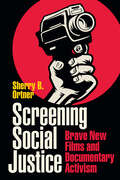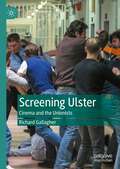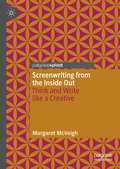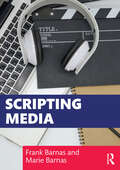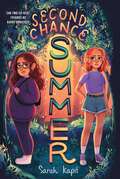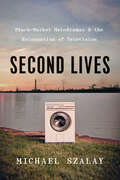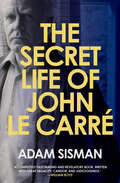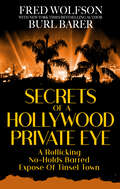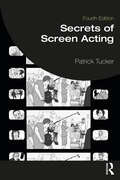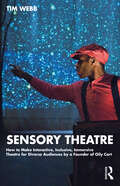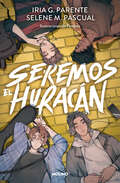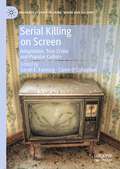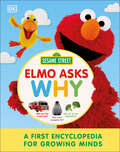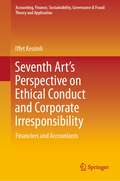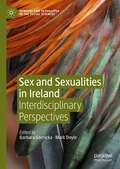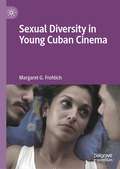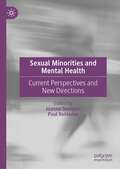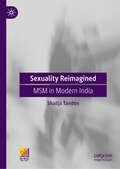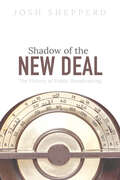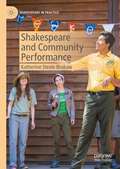- Table View
- List View
Screening Social Justice: Brave New Films and Documentary Activism
by Sherry B. OrtnerIn Screening Social Justice, award-winning anthropologist Sherry B. Ortner presents an ethnographic study of Brave New Films, a nonprofit film production company that makes documentaries intended to mobilize progressive grassroots activism. Ortner positions the work of the company within a tradition of activist documentary filmmaking and within the larger field of “alternative media” that is committed to challenging the mainstream media and telling the truth about the world today. The company’s films cover a range of social justice issues, with particular focus on the hidden workings of capitalism, racism, and right-wing extremism. Beyond the films themselves, Brave New Films is also famous for its creative distribution strategies. All of the films are available for free on YouTube. Central to the intention of promoting political activism, the films circulate through networks of other activist and social justice organizations and are shown almost entirely in live screenings in which the power of the film is amplified. Ortner takes the reader inside both the production process and the screenings to show how a film can be made and used to mobilize action for a better world.
Screening Ulster: Cinema and the Unionists
by Richard GallagherThis book presents extensive research into the cinematic representation of the British-identifying Protestant, unionist and loyalist community in Northern Ireland and is the first time such comprehensive analysis has been produced. Gallagher’s research traces the history of the community’s representation in cinema from the emergence of depictions of both nationalist and unionist communities in social-realist dramas in 1980s British and Irish cinema to today, through periods such as those focused on violent paramilitaries in the 1990s and irreverent comedy after the Northern Ireland peace process. The book addresses the perception that the Irish nationalist community has been depicted more frequently and favourably than unionism in films about the period of conflict known as “The Troubles”. Often argued to be the result of an Irish nationalist bias within Hollywood, Gallagher argues that there are other inherent and systemic reasons for this cinematic deficit.
Screenwriting from the Inside Out: Think and Write like a Creative
by Margaret McVeighThis book provides aspiring screenwriters with a practical and informed way to learn how to think and write like a “creative”. It stands apart from, yet complements, other screenwriting “how to” books by connecting the transdisciplinary academic fields of screenwriting, film studies and cognitive psychology and neuroscience. Using a stepped approach, it shows the writer how to understand that how we think, shapes what we write, so that we may write better.
Scripting Media
by Frank Barnas Marie BarnasBringing together professional standards, practices, and jargon from across the industry, Scripting Media provides a complete overview of writing for divergent forms of media. While some forms of media writing have been honed and standardized over generations, others demand new ways of thinking and collaborating. Covering traditional forms of scriptwriting, such as news, advertising, and film scripting, as well as newer and more emerging areas of social media and virtual reality, this book is designed to prepare readers for the varying formats, styles, and techniques specific to each medium. Each chapter contains a list of key terms, an historical overview of the area, and technical specifications for students to be aware of. Exercises, essay prompts, and online links help reinforce students’ knowledge and provide avenues for private study. Written in an accessible and engaging style by two renowned media practitioners, authors, and teachers, Scripting Media is essential reading for students approaching media writing for the first time.
Scripting Media
by Frank Barnas Marie BarnasBringing together professional standards, practices, and jargon from across the industry, Scripting Media provides a complete overview of writing for divergent forms of media.While some forms of media writing have been honed and standardized over generations, others demand new ways of thinking and collaborating. Covering traditional forms of scriptwriting, such as news, advertising, and film scripting, as well as newer and more emerging areas of social media and virtual reality, this book is designed to prepare readers for the varying formats, styles, and techniques specific to each medium. Each chapter contains a list of key terms, an historical overview of the area, and technical specifications for students to be aware of. Exercises, essay prompts, and online links help reinforce students’ knowledge and provide avenues for private study.Written in an accessible and engaging style by two renowned media practitioners, authors, and teachers, Scripting Media is essential reading for students approaching media writing for the first time.
Second Chance Summer
by Sarah KapitBreaking up is hard to do, especially when it's with your best friend. Can these two ex-besties survive summer camp together? Maddie and Chloe have always been best friends, until last year, when Chloe’s popularity and budding fame as an actor left Maddie in the dust one too many times. Their friendship is over, and they’re both ready to move on.But when the girls arrive at summer camp, they discover that the universe isn’t ready to let go of this friendship just yet: They’re cabinmates, and each of them has to spend the summer with her ex–best friend. Is it time to try again, or are they doomed to drift apart for good?
Second Lives: Black-Market Melodramas and the Reinvention of Television
by Michael SzalayA history of prestige television through the rise of the “black-market melodrama.” In Second Lives, Michael Szalay defines a new television genre that has driven the breathtaking ascent of TV as a cultural force over the last two decades: the black-market melodrama. Exemplified by the likes of The Sopranos and Breaking Bad, the genre moves between a family’s everyday life and its secret second life, which may involve illegal business, espionage, or even an alternate reality. Second lives allow characters (and audiences) to escape what feels like endless work into a revanchist vision of the white middle class family. But there is for this grimly resigned genre no meaningful way back to the Fordist family wage for which it longs. In fact, Szalay argues, black-market melodramas lament the very economic transformations that untethered TV viewing from the daily rhythms of the nine-to-five job and led, ultimately, to prestige TV.
Second Lives: Black-Market Melodramas and the Reinvention of Television
by Michael SzalayA history of prestige television through the rise of the “black-market melodrama.” In Second Lives, Michael Szalay defines a new television genre that has driven the breathtaking ascent of TV as a cultural force over the last two decades: the black-market melodrama. Exemplified by the likes of The Sopranos and Breaking Bad, the genre moves between a family’s everyday life and its secret second life, which may involve illegal business, espionage, or even an alternate reality. Second lives allow characters (and audiences) to escape what feels like endless work into a revanchist vision of the white middle class family. But there is for this grimly resigned genre no meaningful way back to the Fordist family wage for which it longs. In fact, Szalay argues, black-market melodramas lament the very economic transformations that untethered TV viewing from the daily rhythms of the nine-to-five job and led, ultimately, to prestige TV.
Second Lives: Black-Market Melodramas and the Reinvention of Television
by Michael SzalayA history of prestige television through the rise of the “black-market melodrama.” In Second Lives, Michael Szalay defines a new television genre that has driven the breathtaking ascent of TV as a cultural force over the last two decades: the black-market melodrama. Exemplified by the likes of The Sopranos and Breaking Bad, the genre moves between a family’s everyday life and its secret second life, which may involve illegal business, espionage, or even an alternate reality. Second lives allow characters (and audiences) to escape what feels like endless work into a revanchist vision of the white middle class family. But there is for this grimly resigned genre no meaningful way back to the Fordist family wage for which it longs. In fact, Szalay argues, black-market melodramas lament the very economic transformations that untethered TV viewing from the daily rhythms of the nine-to-five job and led, ultimately, to prestige TV.
The Secret Life of John le Carre
by Adam SismanThe extraordinary secret life of a great novelist, which his biographer could not publish while le Carré was alive. Secrecy came naturally to John le Carré, and there were some secrets that he fought fiercely to keep. Adam Sisman's definitive biography, published in 2015, provided a revealing portrait of this fascinating man; yet some aspects of his subject remained hidden.Nowhere was this more so than in his private life. Apparently content in his marriage, the novelist conducted a string of love affairs over five decades. To these relationships he brought much of the tradecraft that he had learned as a spy - cover stories, cut-outs and dead letter boxes. These clandestine operations brought an element of danger to his life, but they also meant deceiving those closest to him. Small wonder that betrayal became a running theme in his work.In trying to manage his biography, the novelist engaged in a succession of skirmishes with his biographer. While he could control what Sisman wrote about him in his lifetime, he accepted that the truth would eventually become known. Following his death in 2020, what had been withheld can now be revealed.The Secret Life of John le Carré reveals a hitherto-hidden perspective on the life and work of the spy-turned-author and a fascinating meditation on the complex relationship between biographer and subject. “Now that he is dead,” Sisman writes, “we can know him better.”
Secrets of a Hollywood Private Eye: A Rollicking No-Holds Barred Expose of Tinsel Town
by Fred Wolfson Burl BarerFamous Rock Stars, TV Celebrities, Stone Cold Conmen, A Daring Rescue of Kidnapped Kids, And More! Ready to uncover the truth behind Hollywood's elite? SECRETS OF A HOLLYWOOD PRIVATE EYE is your ultimate source for the juiciest stories, scandals, and gossip from Tinsel Town. Join private investigator Fred Wolfson on thrilling adventures from the glitz and glamour of Bel Air and Beverly Hills to the gritty streets of Hollywood Boulevard. Experience the real-life drama of Wolfson's cases firsthand and the truth behind cheating spouses, greedy con artists, duped superstars, jealous directors, kidnapped children, and every type of civil and criminal caper imaginable in a city known for scandal and celebrity intrigue. As the star of the popular USA Network reality series CASE CLOSED and consulting credits on hit crime dramas like L.A. Law, Murder She Wrote, and Picket Fences, Wolfson brings a lifetime of experience to this compelling compendium of stranger-than-fiction cases.
Secrets of Screen Acting
by Patrick TuckerSecrets of Screen Acting, Fourth Edition, is a step-by-step guide to the elements of successful screen acting. When it was first published in 1993, Secrets of Screen Acting broke new ground in explaining how acting for the camera is different from acting on stage. Reaction time is altered, physical timing and placement are reconceived, and the proportions of the digital frame itself become the measure of all things, so the director must conceptualize each image in terms of this new rectangle and actors must 'fit' into the frame. Based on a revolutionary non-Method approach to acting, this book shows what actually works: how an actor, an announcer, or anyone working in front of the cameras can maximise the effectiveness of their performances on screen. This fourth edition is completely updated to cover new techniques, film references, and insights, including: Updated information on vocal work outside acting, such as audiobooks and voice-overs Guidance on the technique of "whisper acting" New information about working with video games, Facebook, TikTok, Twitter, and other non-traditional forms of screen work Updated guidance on self-taping auditions Coverage of working with CGI and invisible acting partners on green screen Information on typecasting and stereotyping A quick history of theatre and film in 10 pictures A new emphasis on illustrations depicting acting techniques Information on and best practices for presenting oneself to the industry Many new illustrations, all specifically drawn for this edition This book is perfectly suited for Acting for the Screen university courses, actors training on their own, and actors involved in all forms of screen work, including Zoom, Skype, Vox Pops, and more.
Sensory Theatre: How to Make Interactive, Inclusive, Immersive Theatre for Diverse Audiences by a Founder of Oily Cart
by Tim WebbSensory Theatre: How to Make Interactive, Inclusive, Immersive Theatre for Diverse Audiences by a Founder of Oily Cart is an accessible step-by-step guide to creating theatre for inclusive audiences, such as young people on the autism spectrum or affected by other neuro-divergent conditions and children under two. Conventional theatre relies on seeing and hearing to involve its audience; sensory theatre harnesses the power of five or more senses to address its participants who have different ways of relating to the world around them. This book is an insightful history of Oily Cart and its pioneering development of work for the very young, including Baby Theatre, and for neuro-divergent audiences including those on the autism spectrum. It gives a clear introduction to the fundamental concepts of this theatre, suggests a host of practical techniques drawn from over forty years of experience, and describes some of Oily Cart’s most radical innovations, including theatre on trampolines, in hydrotherapy pools, and with flying audiences in the company of aerial artists. The book also includes copious photos from the Oily Cart’s archives and links to videos examples of the company’s work. Readers will learn how to: Research the intended audience while not being led astray by labels. Create a welcoming, immersive sensory space in classrooms, nurseries, school halls, and playgrounds. Devise sensory stories that can be adapted to suit different audiences. Recruit, audition, cast, and run rehearsals. Ensure that the production is truly sensory and interactive. Written for Theatre for Young Audiences, Drama in Education, and specialized Applied Theatre courses, as well as educators and theatre practitioners interested in creating inclusive, interactive productions, Sensory Theatre offers a goldmine of ideas for making work that connects with audiences who can be the hardest to reach.
Seremos el huracán
by Iria G. Parente Selene M. PascualDorothy Gale ha perdido su hogar o, al menos, eso siente ella. Quizá un inesperado grupo de música, junto a tres desconocidos, pueda darle un nuevo lugar al que pertenecer. Aunque el precio sea vivir una vida que no es la suya. Dorothy Gale está perdida o, al menos, se siente así desde que su hermano Theo murió y con él, el sueño de dedicarse juntos a la música. Justo ahora, cuando es demasiado tarde, Dottie recibe una llamada que debió ser para Theo: su gemelo ha sido elegido para formar parte de WIZARD, la próxima boyband de Emerald Music. Pero Theo ya no está. Y si Dottie ocupara su lugar y si se hiciera pasar por él, ¿no sería otra manera de mantener vivo su recuerdo un poco más? La idea parece buena hasta que conoce a sus compañeros de grupo, con los que tendrá que convivir a todas horas: Raven, el actor con fama de cabeza hueca y un instinto único para el show business; Leo, la estrella de TikTok que parece estar siempre a la espera de algo terrible, y Val, el chico sin corazón que no piensa en nada más que en llegar a lo más alto, cueste lo que cueste. Juntos planean arrasar el mundo de la música como un huracán, pero... ¿ES POSIBLE VIVIR UNA MENTIRA DELANTE DE MILLONES DE PERSONAS SIN OLVIDARTE DE QUIÉN ERES EN REALIDAD? Lo que se ha dicho de Seremos el huracán:«Una vez más, Iria y Selene demuestran que saben perfectamente qué teclas tocar para que sus lectores se ahoguen en un mar de emociones».Cherry Chic, autora de la bilogía Rose Lake. «Seremos el huracán es uno de esos libros que te hará sentir como en casa (y se está mejor en casa que en ningún sitio)».Raquel Brune, autora de Los guardianes de almas.
Serial Killing on Screen: Adaptation, True Crime and Popular Culture (Palgrave Studies in Crime, Media and Culture)
by Sarah E. Fanning Claire O’CallaghanThis book explores the representation of real-life serial murders as adapted for the screen and popular culture. Bringing together a selection of essays from international scholars, Serial Killing on Screen: Adaptation, True Crime and Popular Culture examines the ways in which the screen has become a crucial site through which the most troubling of real-life crimes are represented, (re)constructed and made accessible to the public. Situated at the nexus of film and screen studies, theatre studies, cultural studies, criminology and sociology, this interdisciplinary collection raises questions about, and implications for, thinking about the adaptation and representation of true crime in popular culture, and the ideologies at stake in such narratives. It discusses the ways in which the adaptation of real-life serial murder intersects with other markers of cultural identity (gender, race, class, disability), as well as aspects of criminology (offenders, victims, policing, and profiling) and psychology (psychopathy, sociopathy, and paraphilia). This collection is unique in its combined focus on the adaptation of crimes committed by real-life criminal figures who have gained international notoriety for their plural offences, including, for example, Ted Bundy, Ian Brady and Myra Hindley, Aileen Wuornos, Jack the Ripper, and the Zodiac, and for situating the tales of these crimes and their victims’ stories within the field of adaptation studies.
Serienwelten und Sozialstruktur: Verhandlungen sozialer Ungleichheit in kontemporären Serienformaten (Film und Bewegtbild in Kultur und Gesellschaft)
by Jan WeckwerthIn den vergangenen zwei Jahrzehnten haben Fernsehserien, oftmals unter dem Begriff des „Quality TV“ firmierend, eine merkliche kulturelle Aufwertung erfahren. Während der Großteil der Studien den – auch transnational zu verzeichnenden – Erfolg dieser Formate vor allem in ihren narrativen und (audio-)visuellen Innovationen verortet, widmet sich dieser Band der intensiveren Verhandlung des Sozialen in der Serie. Demzufolge besteht ein weiterer bedeutender Faktor für die gestiegene Attraktion von Fernsehserien im detaillierten sozialstrukturellen Aufbau der Seriengesellschaften, in welche die Figuren und ihre Handlungen tief, stimmig und vielschichtig eingebettet sind. Dies lässt die Serienwelt als Ganzes realistischer wirken und sorgt so für eine engere Anbindung an die Alltagskultur ihrer Publika.Ausgehend von diesen Prämissen und auf Basis etablierter Konzeptionen sozialer Ungleichheit wird ein theoretischer wie methodischer Zugang für eine filmsoziologische Analyse sowohl des Sozialraums der Serienwelt als auch der Praxis der darin auftretenden Figuren entwickelt. Die exemplarische Anwendung auf die erste Staffel der Anthologieserie True Detective illustriert die Ausprägungen eines neuen sozialen Realismus, der sich auch in den Publikumsreaktionen auf die einzelnen Episoden niederschlägt.
Seriously Mad: Mental Distress and the Broadway Musical
by Aleksei GrinenkoTheatermakers in the United States have long been drawn to madness as a source of dramatic spectacle. During the Broadway musical’s golden age in the mid-twentieth century, creative teams used the currently in-vogue psychoanalytic ideas about mental life to construct troubled characters at odds with themselves and their worlds. As the clinical and cultural profile of madness transformed over the twentieth century, musicals continued to delve into the experience of those living with mental pain, trauma, and unhappiness. Seriously Mad offers a dynamic account of stage musicals’ engagement with historically significant theories about mental distress, illness, disability, and human variance in the United States. By exploring who is considered mad and what constitutes madness at different moments in U.S. history, Aleksei Grinenko shows how, in attempts to bring the musicals closer to highbrow sophistication, theater dramatized serious medical conditions and social problems. Among the many Broadway productions discussed are Next to Normal, A Strange Loop, Sweeney Todd, Man of La Mancha, Gypsy, Oklahoma!, and Lady in the Dark.
Sesame Street Elmo Asks Why?: A First Encyclopedia for Growing Minds
by DKDiscover fascinating facts about our incredible world with Elmo and friends!Elmo and his friends have lots of questions, and maybe you do, too. Why do bees sting?Why should I brush my teeth?Why do we need microscopes?Join Elmo and friends to find out the answers to these questions and many more. This first encyclopedia is bursting with exciting information and fascinating photographs about our wonderful world to help little learners grow smarter, stronger, and kinder.© 2023 Sesame Workshop®
Seventh Art’s Perspective on Ethical Conduct and Corporate Irresponsibility: Financiers and Accountants (Accounting, Finance, Sustainability, Governance & Fraud: Theory and Application)
by Iffet KesimliThis book discusses the possibility of corporate professionals—specifically accountants, bankers, and financiers—being influenced by the seventh art, i.e. cinema, and acting out fraudulent actions depicted in the cinematic world in the real life situations. It is widely known that real world scenarios influence cinema. Through a field study, this book evaluates if there is a reciprocal effect on events in the real world being impacted by scenarios depicted in movies. A questionnaire was designed in order to understand the perception of business ethics among above-mentioned professionals and if such a perception was formed or influenced due to observed behaviors from movies. The book concludes with an assessment of the power of visual art in affecting real world behaviors and outlines strategies for recognizing and preventing such behaviors leading to unethical conduct and corporate irresponsibility.
Sex and Sexualities in Ireland: Interdisciplinary Perspectives (Genders and Sexualities in the Social Sciences)
by Barbara Górnicka Mark DoyleThis edited collection provides an invaluable resource of seventeen chapters from a wide range of academic disciplines. These chapters place sex and sexualities in Ireland in historical context and take the reader through the structural changes that have transformed the expression of sexuality in Ireland from one of self-denial to self-expression. The collection does not however unquestionably assume a linear narrative of progress: new issues and challenges are also addressed throughout. This book will be of interest to students and scholars from a range of disciplines including sociology, social policy, history, media, gender studies and psychology. The collection is divided into six separate but interlinked thematic sections: Sexualities in Historical Irish Contexts, Young Adults, Sexual Health, and Education, Sexual Practices and Health, Minority Sexualities and Genders, Sex Work in Ireland and Activism and Contestation.
Sexual Diversity in Young Cuban Cinema
by Margaret G. FrohlichThis book explores how young Cuban filmmakers have expanded the range of sexual subjectivities on screen. It analyzes cine joven (films made by young directors) from the late 1980s to the early 2020s, film reviews, articles, and materials from the Cinematheque of Cuba's archive to illustrate the confluence of sexuality, cinema, and discourses of youth. While sexual and cinematic cultures have their own unique relation to the public sphere, state institutions, and transnational flows, this book explores tensions, debates, and expressions that unite them. In an investigation of how young filmmakers employ queer strategies of self-making to bring sexual diversity to the screen, Margaret G. Frohlich shows us how cine joven takes part in the socialization of power in Cuba.
Sexual Minorities and Mental Health: Current Perspectives and New Directions
by Joanna Semlyen Poul RohlederThis edited book presents a comprehensive guide to the research, challenges and differing perspectives within mental health for sexual minority populations in the UK. Drawing on clinical, social, health and community psychology perspectives, it brings the urgency of this topic back to the fore, providing insight into some of ways we understand and make sense of the increased prevalence of poorer mental health in these populations. Using an intersectional approach, a broad range of experts from across academia and practice explore the specific threat and discrimination faced by sexual minorities and investigate the high prevalence of poor mental health, health risk behaviours and psychological distress in these groups. The volume also offers innovative insight as to ways in which the disparities experienced by sexual minorities may be addressed. Ideal for practitioners in mental health and sexuality, as well as psychologists, policy makers, and academics alike interested in mental health, sexuality, public health, psychotherapy, psychoanalysis, or counselling, this collection features wide array of qualitative and quantitative sources to describe the current state of the art with an interdisciplinary lens.
Sexuality Reimagined: MSM in Modern India
by Shailja TandonThe book examines how medical knowledge is produced around bodies that do not fit in the heteronormative framework of the state’s rationale and processes. The marginal bodies studied in this research are termed MSM, men who have sex with men, categorized as a high-risk group in the backdrop of HIV/AIDS. These Queer bodies entered the registers of epidemiology and governmentality. This classification is the point of departure for the book. The book interrogates and asks how does a sexual subject become a political question? To answer this political trajectory, the book analyses the category of risk in biomedicine. It investigates how the category of risk becomes critical to the Indian state’s rationale and policies wherein, through the ambit of health and population, sexuality is managed. Unearthing the sexual politics in South Asia, the book, based on rich empirical evidence derived from the lived experiences of MSM, narrates the construction of sexual subjectivity and masculinity. The process of construction occurs in negotiation with the Indian state, bringing forth the dimension of the Indian state as a medico-legal governmentality regime and how MSM takes on the identity of a medicalized subject.
Shadow of the New Deal: The Victory of Public Broadcasting (The History of Media and Communication)
by Josh ShepperdDespite uncertain beginnings, public broadcasting emerged as a noncommercial media industry that transformed American culture. Josh Shepperd looks at the people, institutions, and influences behind the media reform movement and clearinghouse the National Association of Educational Broadcasters (NAEB) in the drive to create what became the Public Broadcasting Service and National Public Radio. Founded in 1934, the NAEB began as a disorganized collection of undersupported university broadcasters. Shepperd traces the setbacks, small victories, and trial and error experiments that took place as thousands of advocates built a media coalition premised on the belief that technology could ease social inequality through equal access to education and information. The bottom-up, decentralized network they created implemented a different economy of scale and a vision of a mass media divorced from commercial concerns. At the same time, they transformed advice, criticism, and methods adopted from other sectors into an infrastructure that supported public broadcasting in the 1960s and beyond.
Shakespeare and Community Performance (Shakespeare in Practice)
by Katherine Steele BrokawThis book explores how productions of Shakespearean plays create meaning in specific communities, with special attention to issues of access, adaptation, and activism. Instead of focusing on large professional companies, it analyzes performances put on by community theatres and grassroots companies, and in applied drama projects. It looks at Shakespearean productions created by marginalized populations in Greater London, Harlem, and Los Angeles, a Hamlet staged in the remote Faroe Islands, and eco-theatre made in California’s Yosemite National Park. The book investigates why different communities perform Shakespeare, and what challenges, opportunities, and triumphs accompany the processes of theatrical production for both the artists and the communities in which they are embedded.
